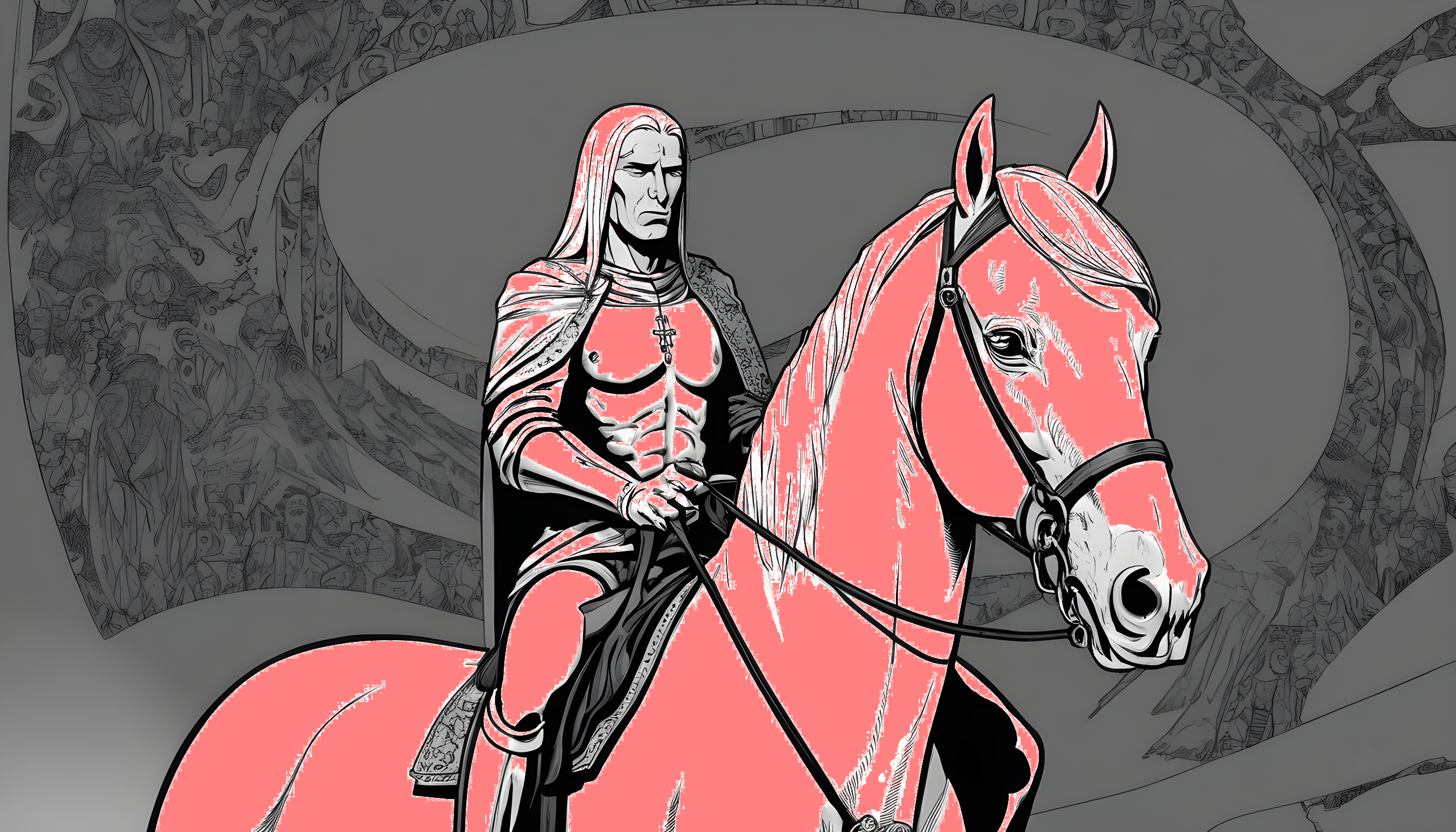The Red Horse: Conflict, Violence, and the Price of War
In the dramatic unfolding of Revelation Chapter 6, the breaking of the second seal unleashes a terrifying scene: “Another horse, fiery red, went out. It was given power to take peace from the earth and to make people kill each other. To its rider was given a large sword” (Revelation 6:4).
The fiery red color evokes violence, bloodshed, and the horrors of war. This rider brings not peace, but the exact opposite – a destructive force tearing at the fabric of society. Let’s explore potential interpretations of this unsettling image:
Cycles of Violence: The red horse symbolizes the ongoing cycles of war and conflict throughout human history. It speaks to the ease with which peace can be shattered and the devastating consequences of violence.
External Conflict: This could refer to wars between nations, civil unrest, and other forms of large-scale conflict that leave devastation and suffering in their wake.
Internal Turmoil: In a more personal context, the red horse could symbolize internal struggles of anger, hatred, and a propensity towards violence. It highlights the destructive potential within ourselves and our communities.
Social Injustice: The “large sword’ hints at the power imbalances and social inequalities that often contribute to conflict. It’s a reminder that injustice and oppression can breed violence and discord.
Meaning for Our Lives Today
The red horse is a stark confrontation with the harsh realities of violence and conflict in our world. Its symbolism invites us to reflect on how we can work toward peace in our individual lives and on a global scale. Here are some ways the message applies:
Promoting Peace: Actively work towards peaceful conflict resolution in your personal relationships, community, and beyond. Support initiatives aimed at diplomacy, reconciliation, and justice as a path to lasting peace.
Rejecting Violence: Refuse to glorify or engage in violence. Strive to resolve conflicts through dialogue and understanding, and challenge narratives that justify violent acts.
Addressing Injustice: Recognize the connection between social injustice and potential violence. Advocate for equality, fair systems, and work towards addressing root causes of conflict.
Cultivating Compassion: Develop empathy towards those affected by violence. Offer support to victims, refugees, and those working to rebuild conflict-torn societies.
Revelation 6, Red Horse, Second Seal, War, Violence, Conflict, Injustice, Peace, Advocacy, Compassion, Responsibility, Diplomacy, Resolution
Remember: The red horse does not glorify violence or suggest that it’s inevitable. It’s a call to awareness, a plea to break the devastating cycle of bloodshed, and actively work towards a world where peace prevails.
Further Exploration
War’s Impact: Research the lasting consequences of war, including its psychological, social, and economic tolls. Learn from history to inform strategies for preventing future conflicts.
Advocacy Groups: Explore organizations dedicated to peace-building, conflict resolution, and ending violence. Find ways to support their work and amplify their message.
Peace Within Us: Seek resources on addressing anger, healing from trauma, and fostering healthy communication and conflict resolution skills.
The red horse presents a confronting image, but it also inspires us to recognize our individual and collective responsibility for promoting peace. By choosing compassion, pursuing justice, and rejecting violence, we can contribute to a future where the red horse loses its power.



